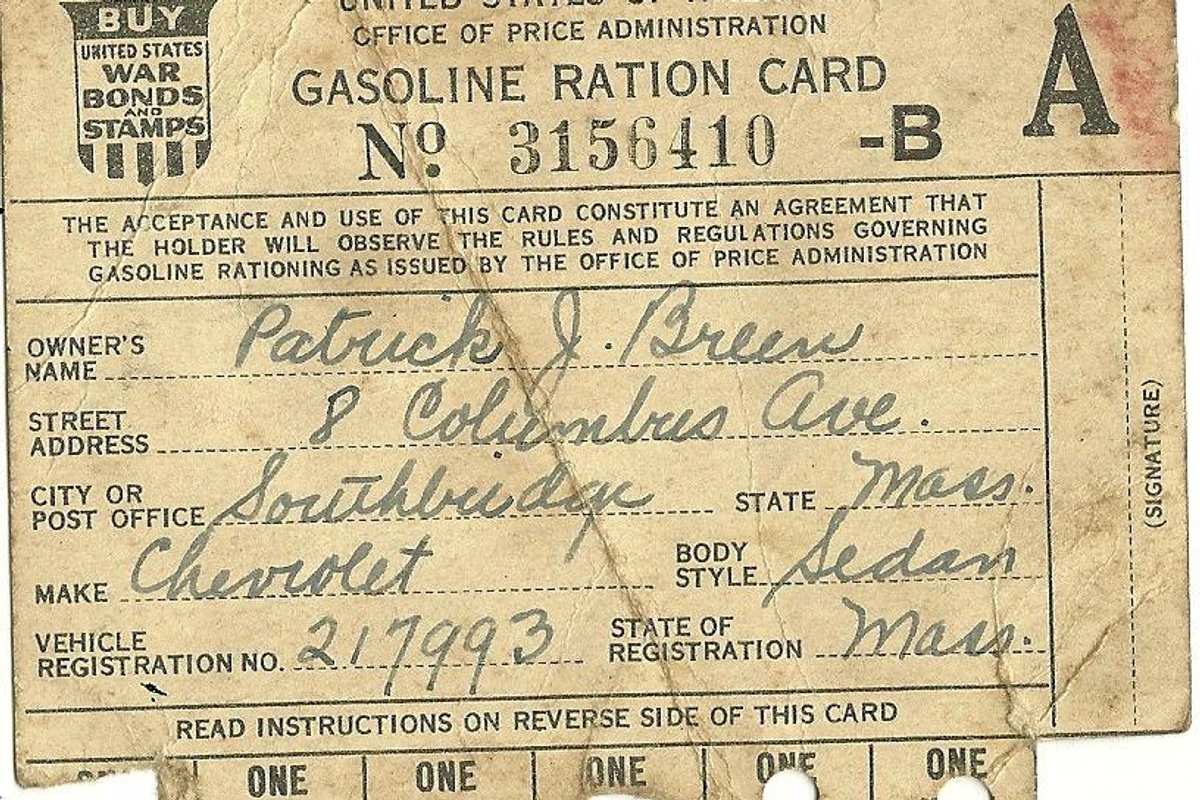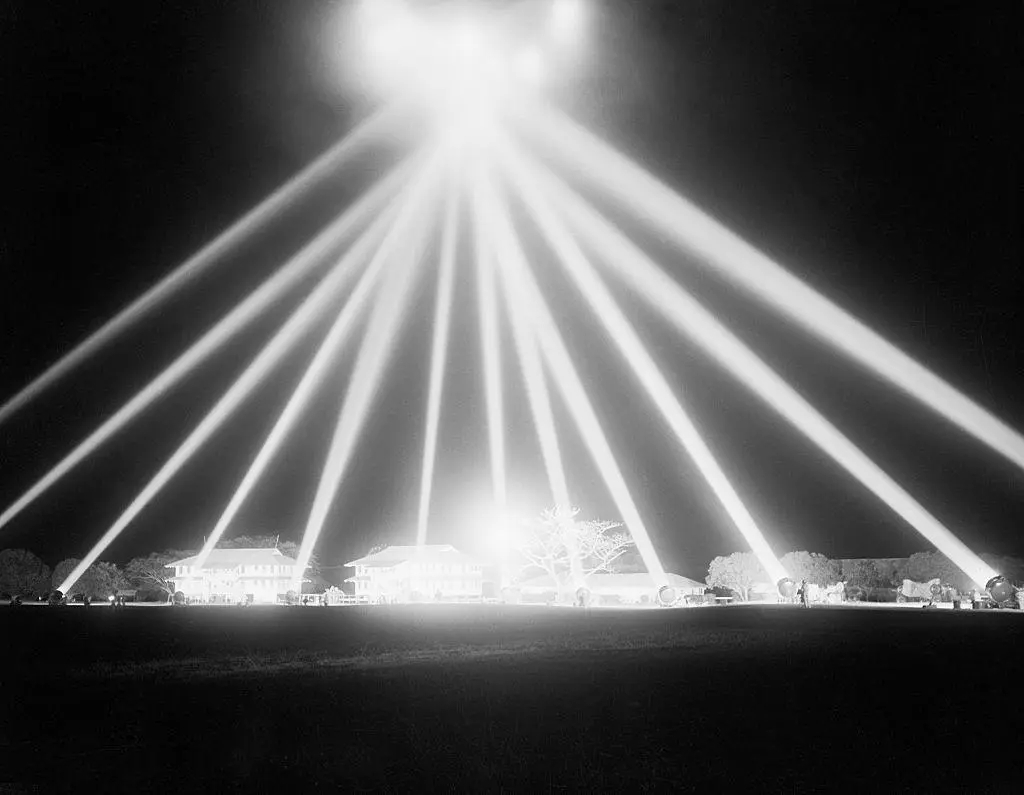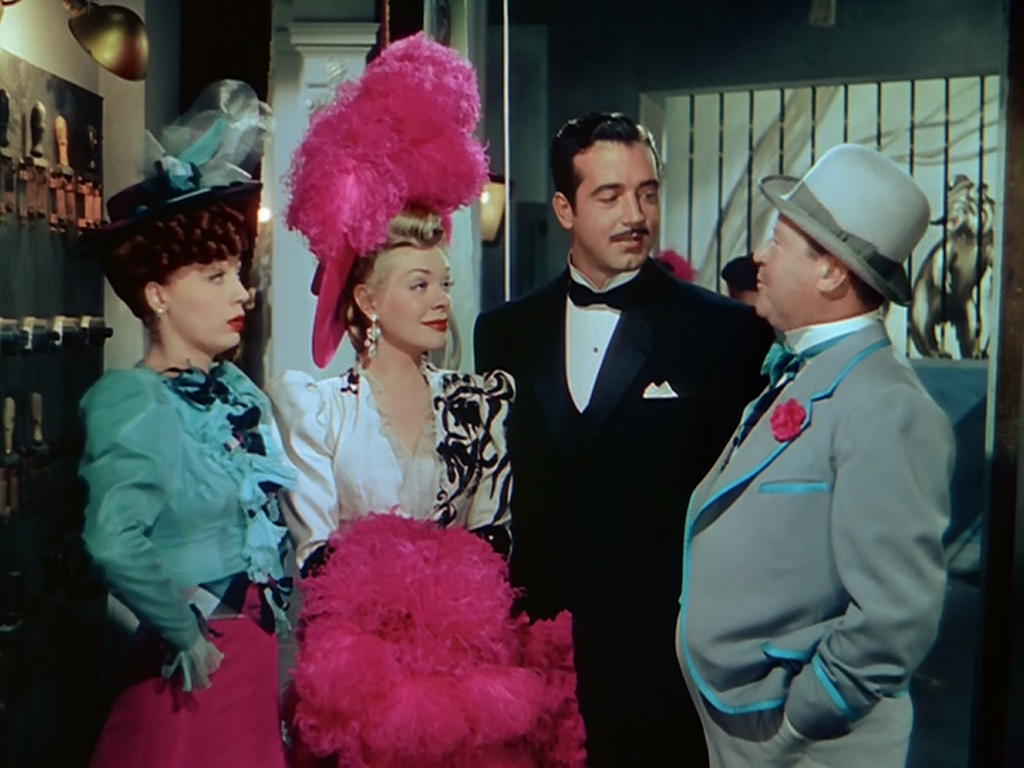
It’s no secret that there were shortages during the war. Nylons were out for the time being and cotton and rayon stockings were in. Magazines of the time reported that skirts were to be only three feet in circumference and trimming was limited. Shoes were rationed. None of this kept people from buying clothes, of course.
Fabrics and leather weren’t the only rationed items, of course. Food rationing was a thing in the United States just as it was everywhere else, although this might vary depending on where one lived. Metal was also rationed, as was gasoline. Toys were made out of wood and paper instead of metal.
Hollywood was affected just like anywhere else, but they hid it well. Pretty much.
Where the Rubber Meets the Road (Sometimes Literally)

Since rubber was in short supply and new cars were almost unheard of during the war, car chases were obviously out. Studios also had to be careful about how much they used cars in movies as a general thing due to gas rationing. Scenes were heavily rehearsed so there would be fewer surprises.
The government also required studios to spend no more than five thousand dollars per movie on sets, as this obviously would require materials that were hard to come by. As a result, there was an effort to make sets reusable and interchangeable. Where materials had to be substituted, there were often clever paintjobs involved to hide the evidence, such as when wood stood in for stone or concrete.
Special Effects

Like sets, special effects had to be reusable and interchangeable. Anything involving fire, for instance might use gas jets that wouldn’t really burn a set, theoretically, at least, on asbestos made to look like wood. Miniatures, of course, became more important than ever, because they were easy to reuse.
Just In Case

Hollywood’s adaptation to wartime went beyond filmmaking. Since we didn’t know at first how far the Germans and the Japanese would get in their drive to invade the United States, and early in the war they were almost right on our doorstep, the studios added blackout and built onsite air raid shelters. Warner Bros. was the first to complete theirs, finishing four by January 2, 1942 and then building ten more.
Although these shelters were sandbagged and equipped with hospital units, firefighting equipment, beds, and all the usual shelter accoutrements, how they were fitted out depended on who would be occupying them. Executives, for instance, had the plushest accomodations. Some shelters had pianos and other instruments. Jukeboxes were also a thing.
For a while it seemed these preparations were justified, especially around the time of the Battle of Los Angeles, but as the war went on and it was clear Germany and Japan weren’t going to make it to American soil, these shelters were probably quietly dismantled.
Will It Color?

It’s often said that Hollywood filmed mostly everything in black and white during the war due to the shortages of chemicals needed for Technicolor. I personally disagree with this idea because even just a cursory glance at film catalogues of the war years shows this to be incorrect. Between 1942 and 1945, there were one-hundred eleven movies made in color in the United States out of one thousand, eight-hundred thirteen total movies.
In the entire decade of the 1930s, on the other hand, there were one-hundred twenty-eight color films made out of five thousand, five hundred sixty-two total movies. So no, Hollywood wasn’t cutting back on color films during the war; if anything, they were making more of them.
It’s generally agreed, however, that black and white was used more post-1945 due to shortages being more severe after the war than during it, but we’ll get to that on another day.
What did happen is the federal government ordered the studios to reduce their output by twenty-five percent. Twentieth Century Fox, for instance, went from making 150 movies in 1940 to eighty-six each year between 1942 and 1945. Warner Bros. cut their output the most dramatically of all the studios, as they went from releasing one-hundred twenty-seven movies to fifty-nine each year America was in the war. Scaling back didn’t hurt profits, however, seeing as between their regular releases and government contracts, Hollywood was making money hand over fist.
Costuming

Fabric shortages affected Hollywood just as they did everywhere else, mainly because there were no imports. Most of the time, the quality was still top-notch when it came to film costumes, but at other times it was an excuse to use as little fabric as possible, making for some skimpy and oftentimes just plain ugly garments, such as in Something For the Boys and Delightfully Dangerous.
At other times, though, this improvization led to some very distinctive looks. Mary Astor’s lace dress that she wore in the finale of Meet Me In St. Louis was rumored to be made of doilies due to MGM’s costume department running out of lace fabric. While I can’t confirm this, it’s not outside the realm of possibility, seeing as Hollywood did run out of things during the war, or they were limited in what they could bring in. Hairpins, for instance, were restricted to two pounds a month per studio, catalogued, and sterilized.
Another very memorable dress was made with half magenta fabric and the other half was a complimentary flowered fabric. I’ve seen this particular outfit in two different movies so far: Something For the Boys, where it was worn by Sheila Ryan, and State Fair, when it was worn by a member of the company during the “All I Owe Ioway” number. It’s a dress that can’t be unseen once it’s seen, not because it’s ugly, but because it’s a quintessential example of what was being done with fabric during the war years both in Hollywood and out of it.
Rationing may have been unavoidable during the Second World War, but if anyone or anywhere could put a layer of illusion over the shortages, it was Hollywood.
Hello, Frisco, Hello (DVD and Blu-ray), Meet Me In St. Louis (DVD and Blu-ray), Something For the Boys (DVD) State Fair (DVD), and Delightfully Dangerous (DVD and streaming) are available to own from Amazon.
~Purchases made via Amazon Affiliate links found on this site help support Taking Up Room at no extra cost to you.~
If you’re enjoying what you see on Taking Up Room, please subscribe to my Substack page, where you’ll find both free and paid subscriber-only reviews of mostly new and newish movies, documentaries, and shows. I publish every Wednesday and Saturday.

I love this. Very interesting. Can you imagine if people were so rationed today? We practically had a war over toilet paper a few years ago!
LikeLike